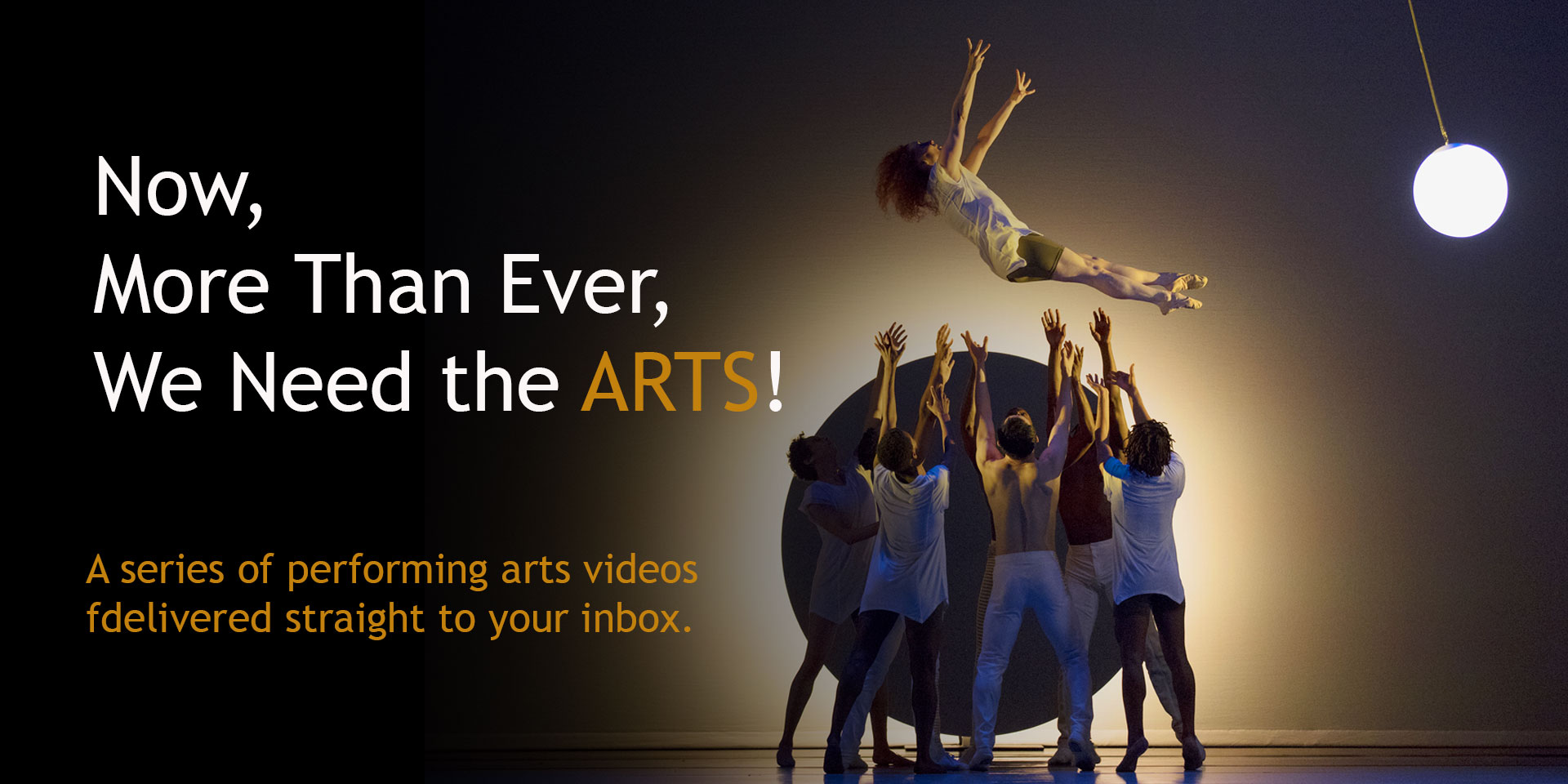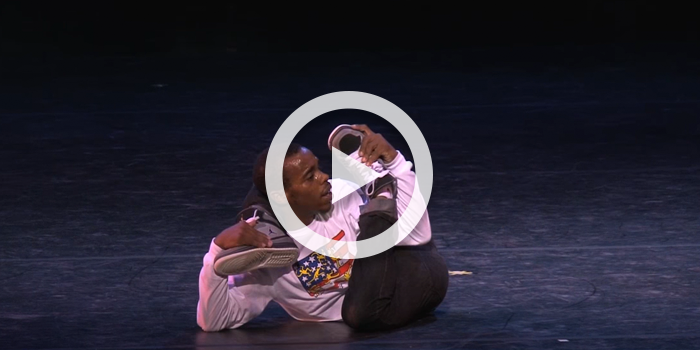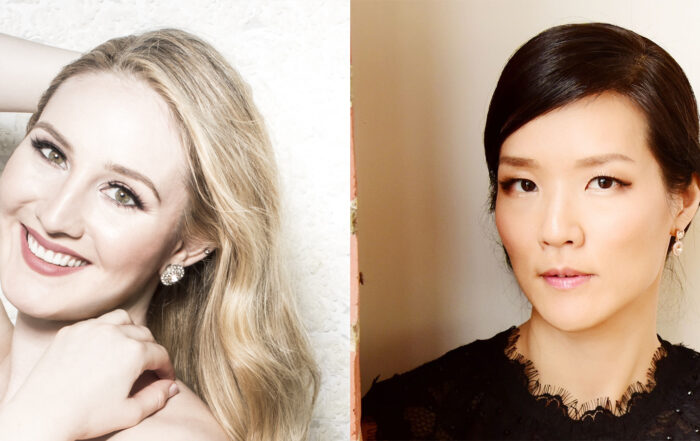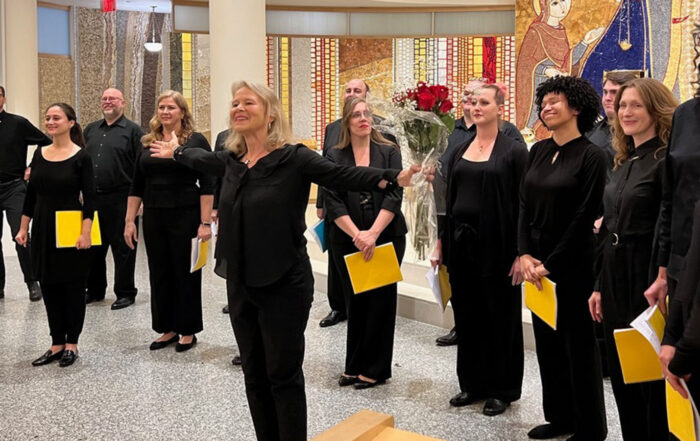Hybrid virtual-live performances of Bach’s Goldberg Variations performed by Mahan Esfahani; Beethoven’s Adagio sostenuto from Piano Sonata, Quasi una fantasia (Moonlight) performed by Mitsuko Uchida; Simon & Garfunkel’s “The Sound of Silence” performed by Nina Simone; Smoke, Part 3 performed by Sylvie Guillem and choreographed by Mats Ek
Now, More Than Ever
Celebrating great performances, past and present.
As a light begins to shine on the horizon and we move toward recovery from the current pandemic, Cal Performances joins our entire audience in looking forward to a return to live presentations in our UC Berkeley concert halls. Surely, that day can’t arrive soon enough!
Since March 2020, and through the pandemic’s darkest days, Now, More Than Ever has continued to celebrate the performing arts’ unsurpassed ability to express the strength and resilience of the human spirit. Through these blog posts, we have enjoyed upwards of 300 memorable performances by the world’s most accomplished and inspiring artists.
Cal Performances hopes you’ll continue to enjoy these YouTube-led virtual journeys—presentations designed specifically for our adventurous and eclectic audiences—until, that is, we can share such experiences together again, live, and under the same roof.
Most importantly, we continue to encourage one and all to find time—each and every day—for the performing arts!
Curated by Jeremy Geffen, Executive and Artistic Director, Cal Performances
Now, More Than Ever: Issue 56
There’s certainly nothing new about viewing the performing arts through the lenses of different media and technology. (Think of motion picture and audio recordings, which have been with us all our lives.) But it’s also worth remembering that for most of history, works of music, dance, and theater have been enjoyed directly by individual human beings from the position of a single seat in an audience, and fully in the moment. No energizing combination of eye-striking camera angles, no virtuosic cross-cutting edits, no film director calling the shots or audio engineer adjusting the levels. Little, in fact, that might introduce artistic sensibilities separate from the performers’ into the mix.
(Of course, collaborators will always exist, enriching and flavoring the artistic stew; as Stephen Sondheim has told us, “The art of making art is putting it together.”)
The question of adding various layers of “interpretation” between artist and audience has suddenly become much more a frontline issue in the days of Covid-19, given—and if only out of necessity—the current increased need for contributory media that help shape and present the final artistic experience.
Today’s hybrid approach to conveying the magic of live performance can certainly lead to mixed results—and I’m not advocating for more layers of separation between audience and performers—but when a hybrid approach works, it’s because it speaks directly to the demands of the times while simultaneously offering up its own special kind of creativity. Recently, for instance, I’ve even seen some remarkably fine performances that have successfully survived the transfer (transformation?!) to the digital platform. Indeed, with certain presentations, it’s difficult to argue that they aren’t actually better when seen in their “brave new” formats.
When does it all become too much? When does interpretation become over-interpretation? No doubt the answers to these questions will vary along with the viewership.
Bach: Goldberg Variations (Medley)
Mahan Esfahani, harpsichord
I’m very excited that the gifted Persian-American harpsichordist Mahan Esfahani is bringing his much-lauded performance of Bach’s Goldberg Variations to Cal Performances at Home next week (beginning on March 4 and available on demand through June 2). Many of us have enjoyed listening to and attending performances of the Goldbergs—concerts given by no end of accomplished artists, on both harpsichord and modern piano—but believe me, even while lacking the thrilling immediacy we feel in a live performance, watching such a recital close-up and filmed by a sensitive director, editor, and camera operators can be a powerful and rewarding experience. That Esfahani’s concert is performed on the type of instrument for which this music was written (listen to those clacking manuals as he adjusts his harpsichord for the next variation in the set!)—not to mention that it was filmed at the Bach Archive in Leipzig, Germany, the city of the Goldbergs’ birth nearly 280 years ago—well, that’s just icing on the cake!
Here we see a promotional video filmed in Prague (where Mr. Esfahani lives), created in support of the harpsichordist’s 2016 studio recording of the Goldbergs for Deutsche Grammophon. In its own way, even this very short film is charming and effective, but it’s nothing compared to what we have in store on Cal Performances at Home, an original filmed performance that is as visually stimulating as it is aurally rewarding.
By the way, on the subject of the Goldberg Variations, I’d like to recommend a fine new podcast, 30 Bach, described as follows on the project’s website:
Each week features a different artist discussing and performing a portion of J.S. Bach’s masterwork, the Goldberg Variations. Together, we’re making a composite version of the whole work. But don’t expect it to be staid. There’s piano, harpsichord, Afro-Cuban jazz, free improvisation, Brazilian guitar, and chamber music. Laughter, pain, and nanoscience [represented by UC Berkeley’s own Paul Alivisatos!]. All inspired by one piece.
Many thanks to Cal Performances patron Marian Lever for bringing 30 Bach to my attention—it’s an impressive piece of work and well worth checking out!
Beethoven: Adagio sostenuto from Piano Sonata No. 14 in C-sharp minor, Op. 27, No. 2, Quasi una fantasia (Moonlight)
Mitsuko Uchida, piano
When it comes to Beethoven, these days the peerless Mitsuko Uchida usually plays the composer’s five concertos, the Choral Fantasy, much of the chamber music, and all the late sonatas—but the early and middle sonatas, not so much. I asked her about this the other day after watching this poetic and sensitive performance of the famous first movement from Beethoven’s eternally popular Moonlight Sonata in an empty Royal Albert Hall in London last summer; she told me that, until that concert, she had not played this music in a very, very long time. (Never an artist to perform an excerpt from a larger work simply because of its popularity, she had programmed Beethoven’s famous first movement as a companion piece to György Kurtág’s …quasi una fantasia…, itself a reference to Beethoven’s celebrated work.)
But getting back to our larger theme today: How does this music—this particular performance—change for being performed in an empty hall? (After all, all those tiny sound molecules must be vibrating together rather differently in the absence of an audience.) What changes for a performer when a television camera circles above, behind, and around her?
I’m especially proud that Uchida will appear soon on Cal Performances at Home (March 18; on demand through June 16) in an all-Schubert program filmed recently in London’s Wigmore Hall. While any performance by this formidable pianist is a stand-out occasion, to encounter her playing Schubert in our concert series will truly be special, for she is perhaps today’s greatest interpreter of that composer’s magnificent music.
For a fascinating contrast, check out this delightful clip of a very young Uchida playing a Chopin étude at about the time she took Second Place at the 1970 International Chopin Competition in Warsaw. (This may be the first time I’ve seen her with long, straight hair!) You can see the artist beginning to emerge, an evolution that has reached full flower in her present-day performances. And though she has always been astonishing, the dazzling abilities she displayed 50 years ago are today enriched by something more deeply nuanced and mature, a quality as visible in her expressive fingers as it is in her extraordinary face.
Simon & Garfunkel: “The Sound of Silence”
Nina Simone, piano
Many thanks to pianist Jeremy Denk—another artist scheduled to appear soon on Cal Performances at Home (April 15, on demand through July 14, performing Bach’s Well-Tempered Clavier, Book 1)—for sending out this video by Tweet. In this very short clip, we’re afforded the distinct pleasure of watching Nina Simone take her own highly personal approach to the famous Simon & Garfunkel song “The Sound of Silence.”
We’re all familiar with the original, but what Simone captures here—without vocals and in a fully reimagined interpretation, complete with the evocative film work at the start—is both profound and pointed (even a little knife-twisting and raw). Through her glorious, fantasia-like pianism, Simone manages to find her own path into the work, making it totally her own. (A fascinating detail: as one commentator points out, at 1:12 she deliberately doesn’t play the tune where the word “silence” would have been sung.) Until Denk sent this out, I’d never seen this performance. Watching it today, I’m left speechless.
Compilation video
Sylvie Guillem, dancer
When we launched Now, More than Ever last March, I set one rule for myself: no compilations! We ended up doing pretty well with that plan, publishing 55 issues before today’s column, in which we will relax my prohibition in order to share this lovely video honoring the career of dancer extraordinaire Sylvie Guillem. After all, no single performance could possibly do her justice.
And what a career! The early training at the Paris Opera Ballet School. The skyrocket to international fame under the watchful eye of artistic director Rudolf Nureyev as the youngest star (“Étoile”) in that company’s history. The famous and bitter battles with Sir Kenneth MacMillan at the Royal Ballet, which she joined as a guest artist in 1989. The glittering successes in classical ballet followed by a—perhaps even more astonishing—second career in contemporary dance as an associate artist at Sadler’s Wells
In London, a fertile and creative period marked by her stunning work in dances by living choreographers including Akram Khan, Mats Ek, and William Forsythe. And all of it capped by her electrifying 2015 farewell performance in Maurice Béjart’s sizzling Boléro in Tokyo, an unforgettable event that we’ve already seen in Issue 11 of this blog.
As the Guardian wrote in 2015, following the dancer’s announcement of her plans to retire from the stage:
Guillem is, and for more than 30 years has been, a phenomenon. As a technician, she has redefined ballet’s boundaries. Her body, almost android-like in its steely fitness-for-purpose, has been the prototype for a new physical aesthetic. Her fierce independence of spirit has inspired female dancers the world over to confront the culture of compliance which, before Guillem’s arrival, was the unquestioned norm for women in ballet.
What better way to look back on her brilliant 39-year career than by watching this stirring, eye-popping compilation video? (Can a human body really do that?!) Surely great dancers will come and go, but I don’t imagine we will ever again see the likes of Sylvie Guillem.
Smoke, Part 3
Sylvie Guillem, dancer
Mats Ek, choreographer
Music by Arvo Pärt
This breathtaking collaboration between contemporary dancer Sylvie Guillem and Swedish choreographer Mats Ek (who appears in this clip as a pair of disembodied feet at 2:34 and again in the final minute of the piece) provides as strong an argument as I can imagine for the kinds of hybrid “new media” performances we’ve explored in today’s Now, More than Ever. It’s easily one of the most successful, lyrical, and poignant examples I’ve ever encountered of dance-film; that is, something you could never expect to see performed live. (Note, for example, the special film effects such as the costume work beginning at 5:10.)
What a delicate exploration of “fleeting moments of loneliness, insecurity, jealousy, passion, anger, acceptance, and ennui,” in the words of Cultural Weekly’s Sarah Elgart. The piece pays stirring respect to “the stories of both strange and familiar characters in the throes of the human condition, exploring small quotidian moments without ever following a traditional linear narrative. [Ek’s] signature movements are full of intimate gestures that are at once small and grand, complex and simple, recognizable and odd, and yet they make absolute sense as wonderful windows into the lives of the [people] they explore.”
Note: You can view all three parts of Smoke on YouTube, but unfortunately (at least on my devices), there’s a problem with the sound and you miss nearly all of the wonderful music by Arvo Pärt that forms its score. That said, don’t miss the extraordinary section that begins at 11:05, when the sound comes back on.
Now, More Than Ever Full Playlist
Now, More Than Ever Spotify Playlist








